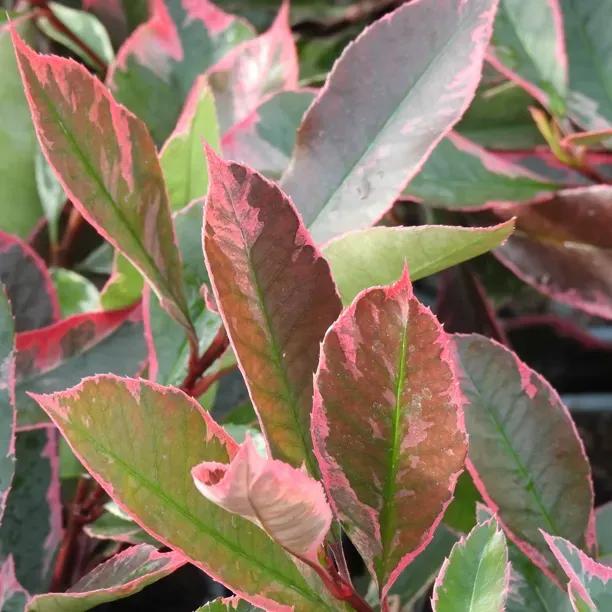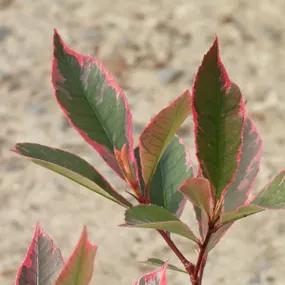Louise Photinia Hedge Plants
The details
Photinia x fraseri
- Evergreen.
- Pink washed new foliage matures to green with cream edges
- Vigorous specimen tree or hedge.
- Shade tolerant, colour is best in the sun.
- Grows on the coast, chalk.
- Max. Height: 5m
- Pot Grown: Year Round Delivery
Recommended extras
Description
Photinia x fraseri 'Louise' Plants. 3 Litre Pots
An exciting new, eye-catching addition to the Photinia family and the most colourful so far. It shoots out bright pinkish-red new leaves that mature into a softer shade of pink and settle into a variegated green and cream. It means that at various stages of the year you can have all three colours at once. It's a vigorous screening plant which is good for formal and informal hedges. It can also be used as a topiary attraction or, as it keeps its shape well, put into a container for a patio or terrace. Slow growing.
Browse our selection of garden shrubs, or all of our hedging.
Photinia hedge plants are only delivered pot-grown, year round.
Features:
- Evergreen.
- Pink-washed new foliage matures to green with cream edges
- Vigorous specimen tree or hedge.
- Shade tolerant, colour is best in the sun.
- Grows on the coast, chalk.
- Max. Height: 5m
- Pot-Grown: Year Round Delivery
Growing Photinia 'Louise'
To get the best out of this photinia, grow in the sun but it will manage too in quite shady spots at the back of a border. It is hardy, but not recommended for exposed, inland Northern sites, where cold dry winds tend to damage the foliage.
It will grow in most well-drained soils, and likes chalk. Heavy clay is fine on a slope or ridge that does get waterlogged, but lighter soils are ideal.
As the first flush of new leaves begins to lose its glow, lightly trim them to encourage another wave; you can do this a couple of times a year until July, and it will help prevent unsightly leaf spot caused by humidity. The bush clips easily and can be hard pruned.
Spacing a Photinia hedge: These large, bushy plants are good at 2 plants per metre, 50cm apart.
In Your Garden Design
This makes a fabulous hedge, but there are myriad ways to use this wonderfully coloured shrubs, crown lifting being one of them. This means removing the lower layers of leaves in spring or autumn to expose the trunk, a "bit like a cancan dancer hitching up her skirts to show off her legs", as one writer put it.
And indeed, no shrub evokes the cancan mood more than Photinia 'Louise' with its brilliant red-flamed halo. You can underplant it with a low cut Dwarf Box, or match the colour with a Hebe Burning Heart. Alternatively, create a contrast, using clusters of Heuchera such as Lime Marmalade at the front, grow clusters of lily of the valley underneath its canopy, or add shade-loving plants nearby, such as anemone, hellebores and hostas.
Another idea is to plant Photinia 'Louise' as a topiary tree in a pot and place one on either side of your patio doors. Spring bulbs, such as Crocus Thommasinianus or grape hyacinths such as Muscari armeniacum look wonderful emerging underneath in early spring.
Did You Know?
Photinia 'Louise' is a natural mutation that was originally found on a P 'Red Robin' by a Glasgow-based nurseryman. It is named after the founder's daughter.




